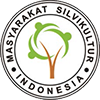Pemetaan Potensi Biomassa Permukaan Rawan Terbakar Berbasis Citra Landsat 8 Oli Di Kecamatan Kahayan Hilir Kabupaten Pulang Pisau
Mapping of Potential Burning Potential Biomass Based on Landsat 8 OLI in Kahayan Hilir District, Pulang Pisau Regency
DOI:
https://doi.org/10.36873/jht.v17i2.8082Kata Kunci:
NDVI, Biomass, Allometric, and Type of land coverAbstrak
Peatland fires in 2015 in Central Kalimantan were biomass fires on peatlands that burned with an area of 196,987 hectares and one of them was in Kahayan Hilir District. this research aims to determine the potential distribution of surface biomass and identify the types of vegetation. this research uses Landsat 8 OLI imagery in 2020 as well as land cover classification and calculation of the Vegetation Index (NDVI) which is then combined with an overlay to create a map of the distribution of land cover types based on their density which is then used for field checks and surface biomass calculations using the allometric formula on each type of land cover. Based on the research conducted, there are 8 types of land cover that can be identified and the percentage of total biomass, namely high density forest (1,419,013,40 tons or 62.58%), high density shrubs and shrubs (770,449.68 tons or 33.98%). ), High density settlements (44.169.32 tons or 1.95 %), high density oil palm plantations (21,518.77 tons or 0.95 %), High density open land (8,025.37 tons or 0.35%), plantations medium density palm oil (2,690.09 tons or 0.12%), medium density open land (1,545.81 tons or 0.07%) and low density open land (79.65 tons or 0.004%). The types of tree-level vegetation found in high-density forests are laban (Vitex pinnata), mahang damar (Macaranga triloba), and bungur (Lagerstroemia speciosa), while on understorey grass species rija-rija (Scleria sumatrensis) are found
Unduhan
Unduhan
Diterbitkan
Terbitan
Bagian
Lisensi
Hak Cipta (c) 2022 Krisna Wahyu, Santosa Yulianto, Penyang

Artikel ini berlisensi Creative Commons Attribution 4.0 International License.
















